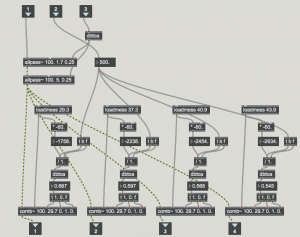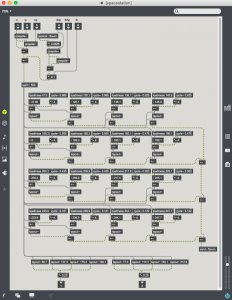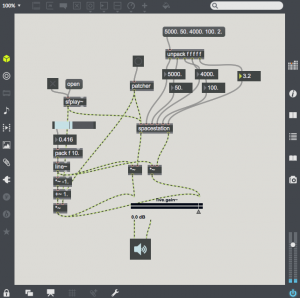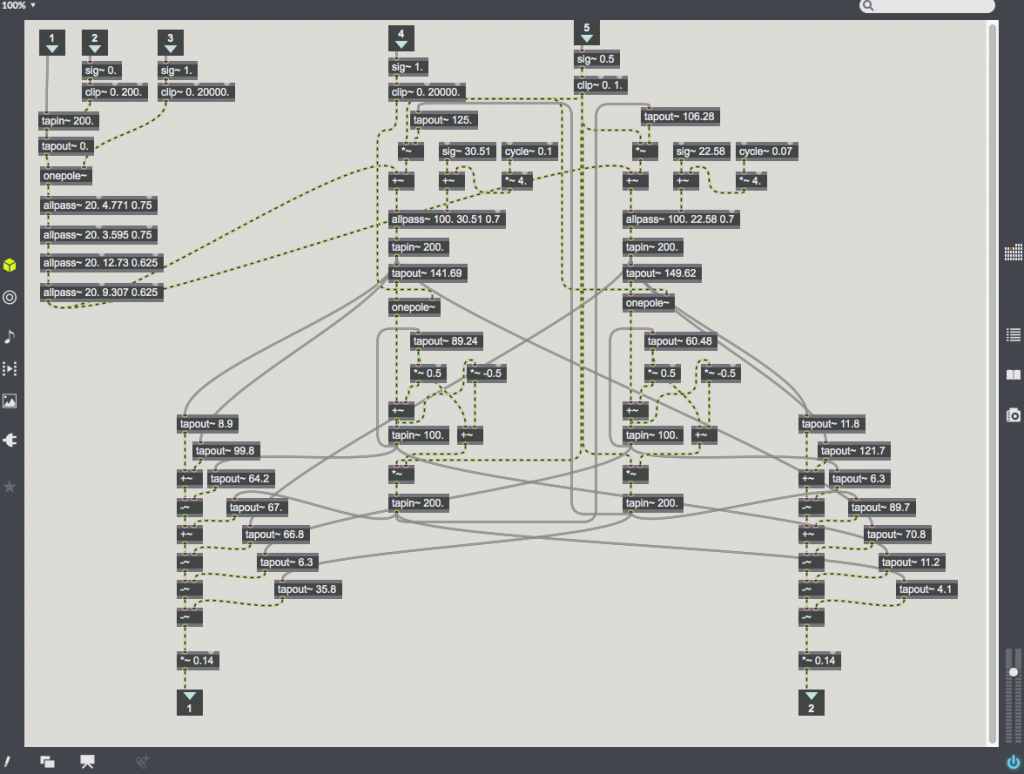This class is not about fully understanding digital reverb – but just enough to get comfortable with some of the ideas. The patches can be downloaded from here: 09max-reverb.
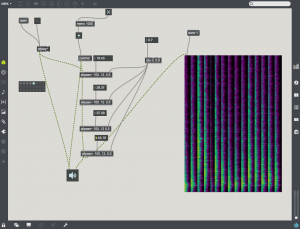 First I would like you to listen to a chain of allpass~ fillters. This allpass filter is a specially configured delay with feedback that is designed to have a flat frequency response. Though it has a flat frequency over it’s entire decay, at any moment it is pitched. Note how the combination of different delay times and gain will sound more noise-like or more metallic. We include the allpass~ filter in most reverb designs because it adds a dense group of many short echoes.
First I would like you to listen to a chain of allpass~ fillters. This allpass filter is a specially configured delay with feedback that is designed to have a flat frequency response. Though it has a flat frequency over it’s entire decay, at any moment it is pitched. Note how the combination of different delay times and gain will sound more noise-like or more metallic. We include the allpass~ filter in most reverb designs because it adds a dense group of many short echoes.
Our first reverb in this collection is the classic Manfred Schroeder reverb. This is just one of his designs, a combination of 4 delays with feedback (aka comb filters) and 2 allpass~ filters. In this example, I combined 2 of these reverbs in a matrix to create a stereo reverb. One innovation of this reverb is that the gain on each comb~ filter is set so that they all decay at the same time. You can adjust the delay time (500 in patch) to make a longer reverb. This reverb design is the basis of the free
verb~ object.
The next reverb is based on the design of Christopher Moore’s Ursa Major Spacestation. This reverb is notable for it’s use of multitap delay, time modulation, and separate delay taps for early reflections. I should note, my patch sounds similar, but nowhere near as warm and rich as the actual hardware.
This reverb starts to feedback and resonate when the gain is set too high. In this image, the gain is set to 3.2 (the maximum allowed by the patch).
Next we have Miller Puckette and John Stautner’s feedback delay network reverb. I implemented the 16 x 16 matrix reverb in this example. There are no allpass filters in this design. Instead, the diffusion comes from the feedback matrix connecting the 16 delay lines. The matrix has a unitary gain, and the reverb will nicely feedback indefinitely if the gain is set to 1.0. Many reverb designs have been based on the FDN including IRCAM’s Spat, and possibly several of the Eventide reverb designs (my guess).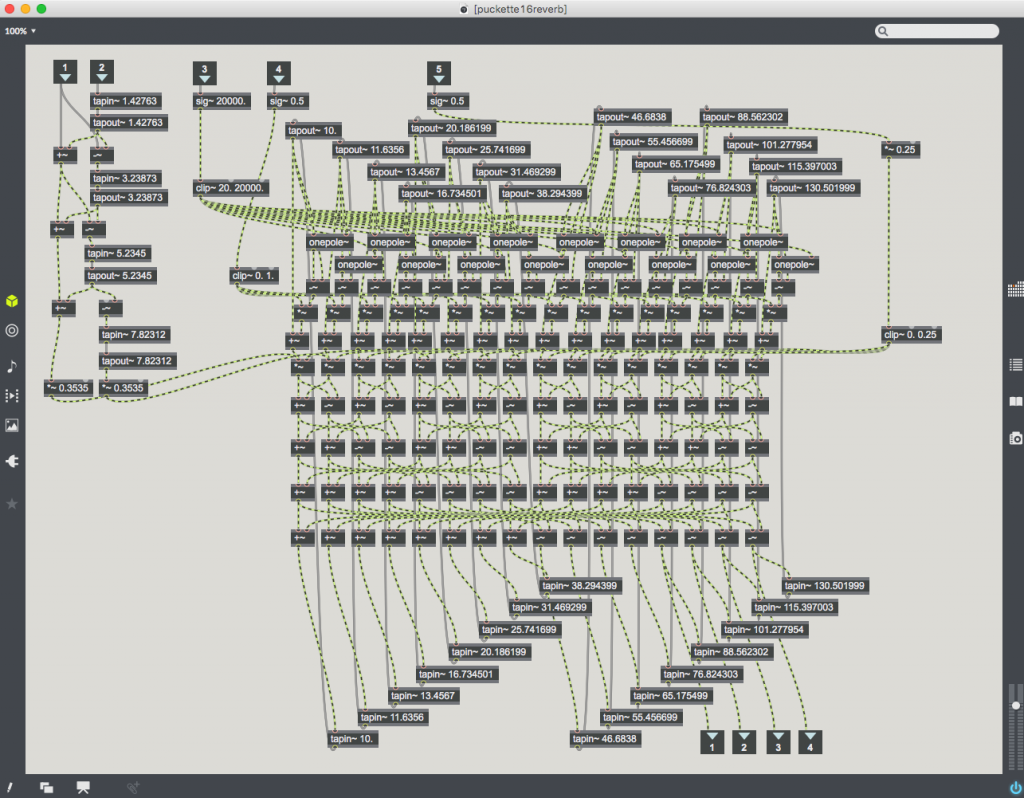
The last reverb patch in this collection is Jon Dattorro’s emulation of a famous commercial reverb. This reverb design features a circle of allpass filters and delays, with many early reflection taps in the loop. Two of the allpass filters are modulated with varying time, and the sound enters the network after being diffused by a chain of allpass filters. Like the Puckette FDN, the gain can be set to 1.0 for “infinite” reverb.

